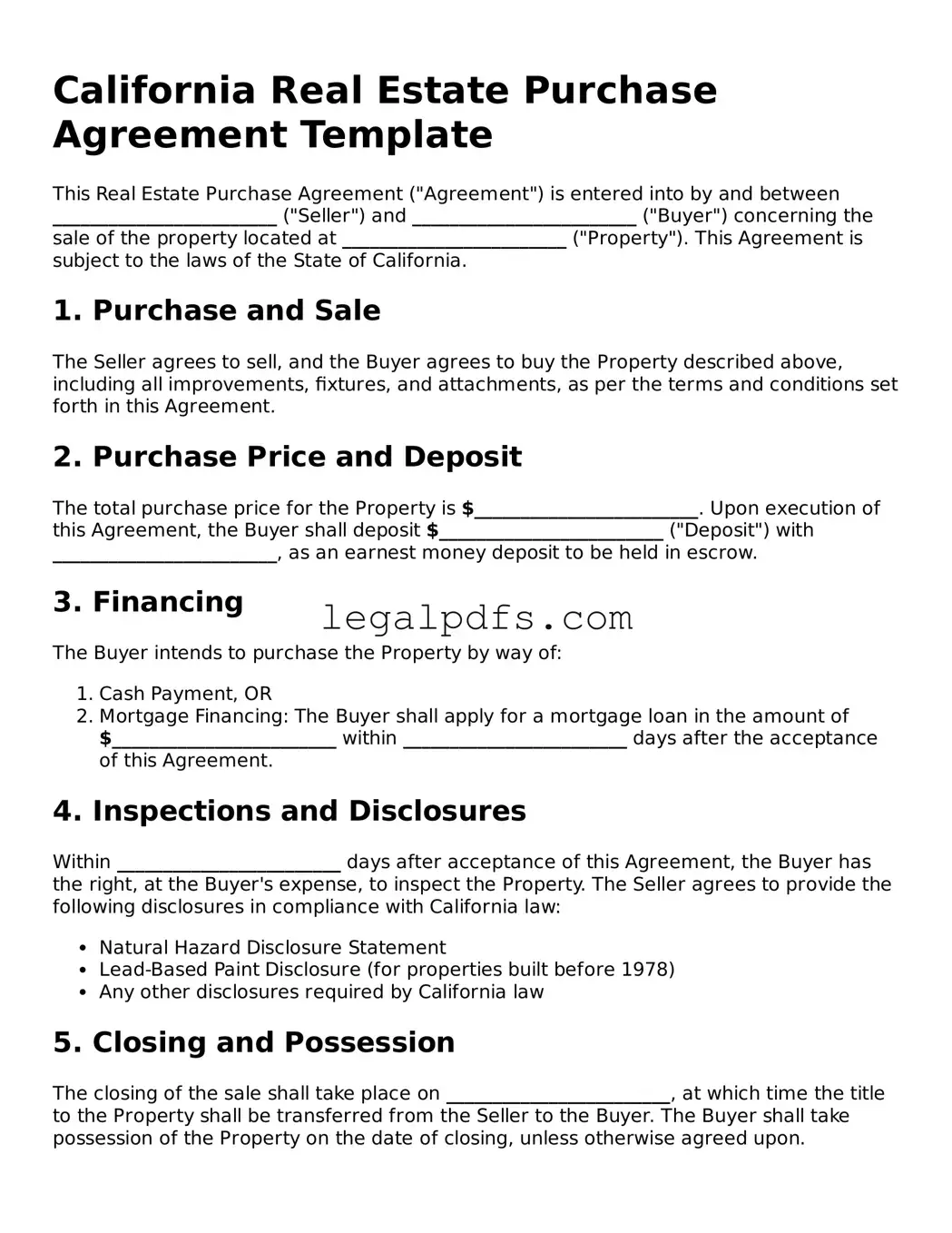California Real Estate Purchase Agreement Template
This Real Estate Purchase Agreement ("Agreement") is entered into by and between ________________________ ("Seller") and ________________________ ("Buyer") concerning the sale of the property located at ________________________ ("Property"). This Agreement is subject to the laws of the State of California.
1. Purchase and Sale
The Seller agrees to sell, and the Buyer agrees to buy the Property described above, including all improvements, fixtures, and attachments, as per the terms and conditions set forth in this Agreement.
2. Purchase Price and Deposit
The total purchase price for the Property is $________________________. Upon execution of this Agreement, the Buyer shall deposit $________________________ ("Deposit") with ________________________, as an earnest money deposit to be held in escrow.
3. Financing
The Buyer intends to purchase the Property by way of:
- Cash Payment, OR
- Mortgage Financing: The Buyer shall apply for a mortgage loan in the amount of $________________________ within ________________________ days after the acceptance of this Agreement.
4. Inspections and Disclosures
Within ________________________ days after acceptance of this Agreement, the Buyer has the right, at the Buyer's expense, to inspect the Property. The Seller agrees to provide the following disclosures in compliance with California law:
- Natural Hazard Disclosure Statement
- Lead-Based Paint Disclosure (for properties built before 1978)
- Any other disclosures required by California law
5. Closing and Possession
The closing of the sale shall take place on ________________________, at which time the title to the Property shall be transferred from the Seller to the Buyer. The Buyer shall take possession of the Property on the date of closing, unless otherwise agreed upon.
6. Legal and Binding Agreement
This Agreement constitutes a legal and binding contract between the Seller and the Buyer under the laws of the State of California. Any amendments to this Agreement must be made in writing and signed by both parties.
7. Signatures
This Agreement is executed by the parties on ________________________.
Seller's Signature: ____________________________________ Date: _______________
Buyer's Signature: _____________________________________ Date: _______________
